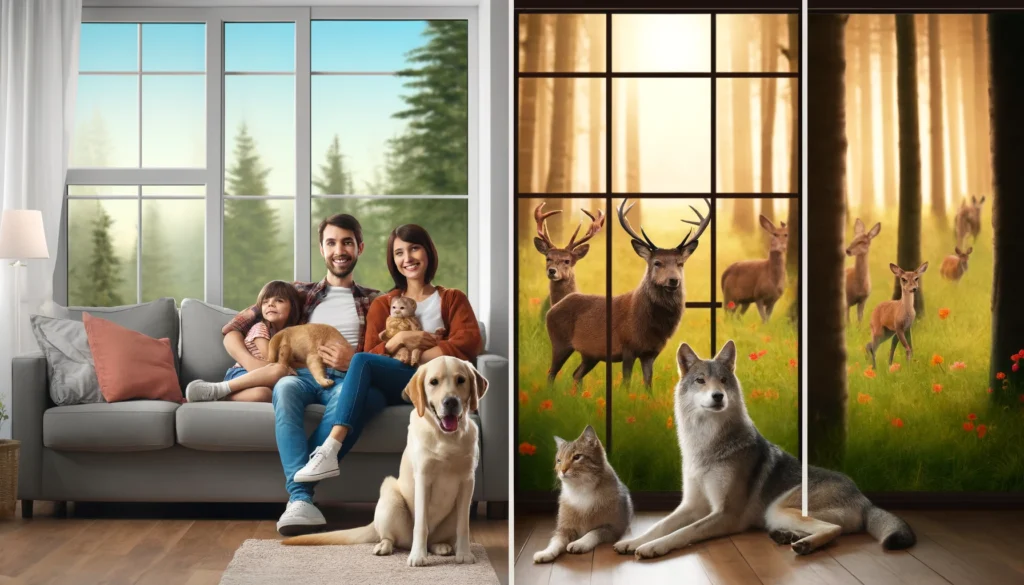In the realm of affection and companionship, few bonds are as pure and heartening as the one shared between humans and their animals. This unique relationship transcends the barriers of language and species, showcasing the profound capability of animals to love unconditionally.
Animals, whether they are loyal dogs, affectionate cats, chirpy birds, or even the silent companionship of fish, bring a sense of comfort and joy to our lives. Their presence in our homes and hearts is a constant reminder of simplicity and unconditional love. Unlike human relationships, which can be complex and fraught with expectations, the love of an animal is straightforward and unwavering. They don’t judge or hold grudges; they simply love.
This pure form of love has a profound impact on human well-being. Studies have shown that interacting with animals can lower blood pressure, reduce anxiety, and even improve mental health. The act of caring for a pet, from feeding them to playing and cuddling, creates a routine that can provide a comforting sense of purpose and responsibility.
Furthermore, animals often have an uncanny ability to sense our emotions and provide comfort when we need it most. A dog might nuzzle up to its owner after a hard day, or a cat might curl up in the lap of someone feeling lonely, offering silent solidarity. These small gestures of affection from our animal companions are simple yet deeply touching.
The bond between humans and animals is not just about the love we receive from them, but also about the love we give. Caring for an animal teaches empathy, patience, and kindness. It’s a mutual relationship where both parties benefit, growing and learning from each other in a shared journey of companionship.
In conclusion, the love between humans and animals is a beautiful testament to the capacity for cross-species friendship and affection. These relationships enrich our lives, teach us about unconditional love, and remind us of the joy and purity in simple acts of companionship. Animals, in their own unspoken ways, teach us what it truly means to love and be loved unconditionally.
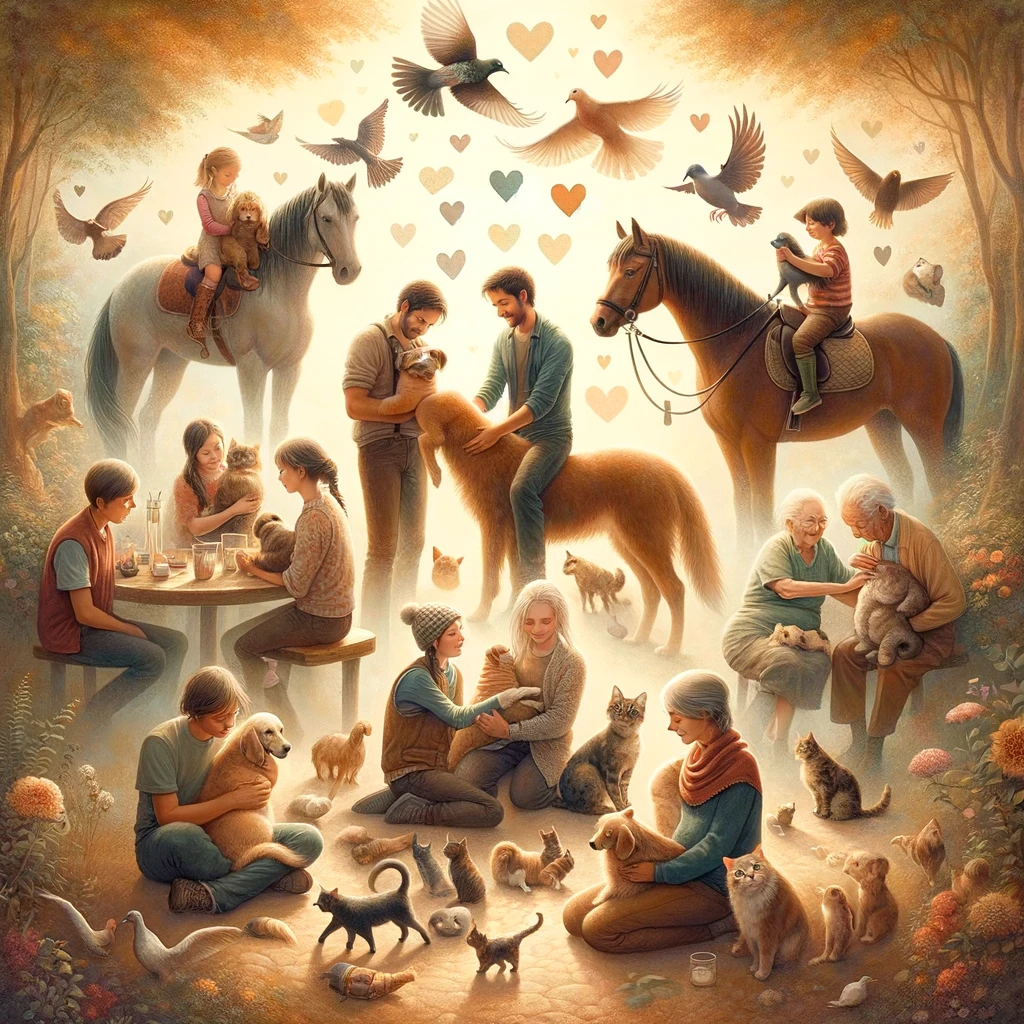
Balancing Diet and Exercise:
Maintaining the health and happiness of our pets involves a delicate balance between diet and exercise. It’s essential to understand that just like humans, animals also need a combination of physical activity and proper nutrition to stay fit and well.
Regular walks are more than just a way to relieve boredom or expend energy; they play a crucial role in your pet’s physical and mental well-being. Frequent walks help regulate your pet’s weight, improve cardiovascular health, and reduce behavioral problems linked to excess energy. They also provide sensory stimulation, which is vital for their mental health, as new scents, sights, and sounds keep their minds active and engaged.
On the dietary side, it’s important to be mindful of the amount and type of food you provide. Overfeeding, even with the best intentions, can lead to obesity and related health problems such as diabetes, joint issues, and heart disease. The key is to find a balance – feed them enough to sustain their energy but not so much that it leads to weight gain.
The right diet varies depending on the pet’s breed, age, size, and level of activity. High-energy breeds, for instance, might require more calories than their less active counterparts. However, these needs change with age and activity level, so it’s important to adjust their diet accordingly. Also, consider the nutritional value of the food, opting for high-quality ingredients that cater to your pet’s specific needs.
Regular veterinary check-ups are also crucial. A veterinarian can provide personalized advice on the appropriate diet and exercise regime for your pet, considering their individual health requirements.
In conclusion, nurturing a healthy pet requires a blend of physical activity and proper nutrition. Frequent walks and mindful feeding are essential components of pet care. By ensuring your pet gets enough exercise and eats the right amount of nutritious food, you are setting the stage for a long, healthy, and joyful life together. Remember, a healthy pet is a happy pet!
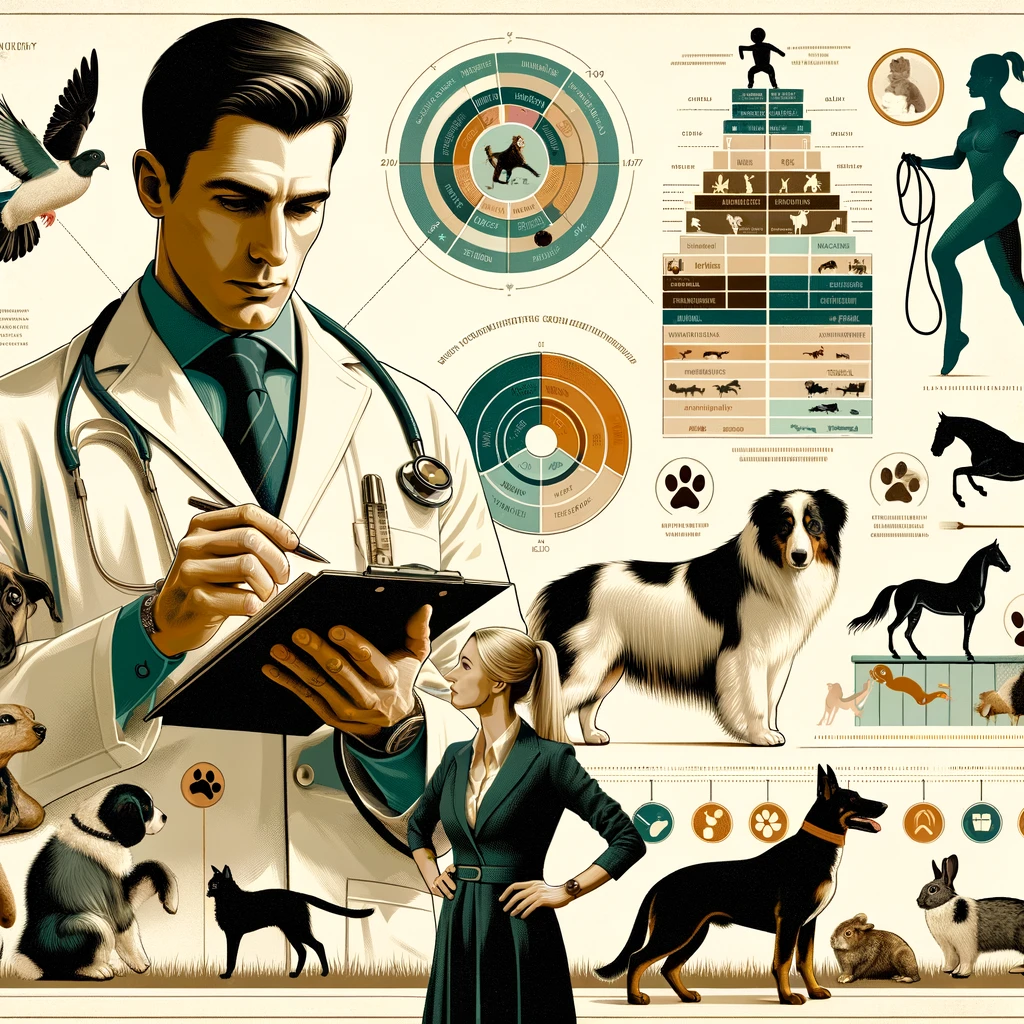
Why Helping Animals is Important
Helping animals is important for several reasons. Firstly, animals are sentient beings capable of feeling pain and joy, much like humans. When we assist animals in need, we acknowledge their right to welfare and a good quality of life. Secondly, helping animals often benefits the environment. Many species play crucial roles in their ecosystems, and aiding them can help maintain biodiversity and ecological balance.
Moreover, aiding animals can have a positive impact on human health and well-being. For instance, caring for pets has been shown to reduce stress and improve mental health. In the broader context, healthy wildlife populations and ecosystems contribute to human health by maintaining clean air and water, pollinating crops, and controlling pests.
Lastly, helping animals fosters empathy and compassion in society. It teaches especially the younger generation the values of kindness and responsibility towards all living beings. This can lead to a more humane and caring society overall. Thus, assisting animals is not just a gesture of kindness towards them, but also a step towards a better world for all.
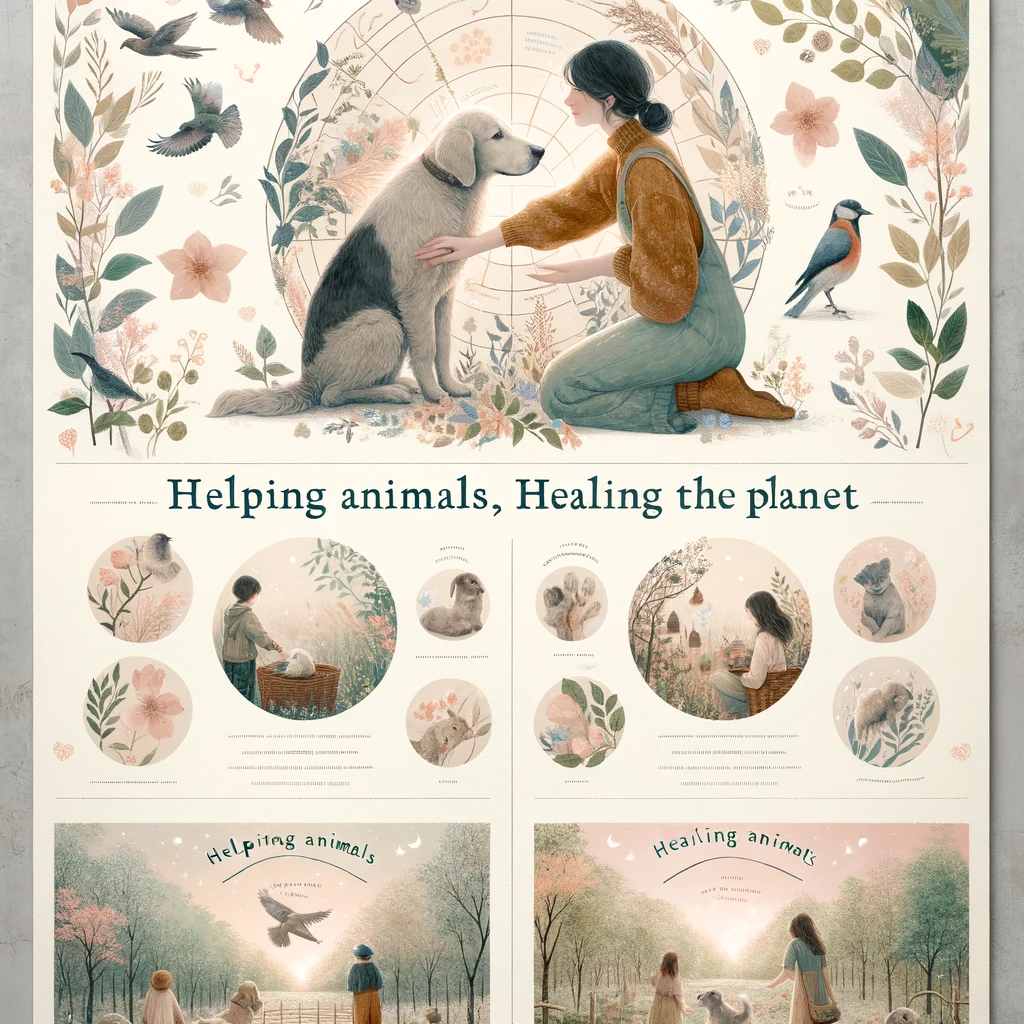
How should animals be treated?
Treating animals with kindness and respect is essential. They should be provided with proper shelter, nutritious food, and clean water. Regular veterinary care is important for their health. Animals need love, attention, and the opportunity to exercise and play. It’s also crucial to understand their natural behavior and provide an environment that caters to their needs. Abstaining from cruelty, neglect, and exploitation is a fundamental aspect of ethical animal treatment. Additionally, educating others about responsible animal care fosters a more compassionate society for all living beings.
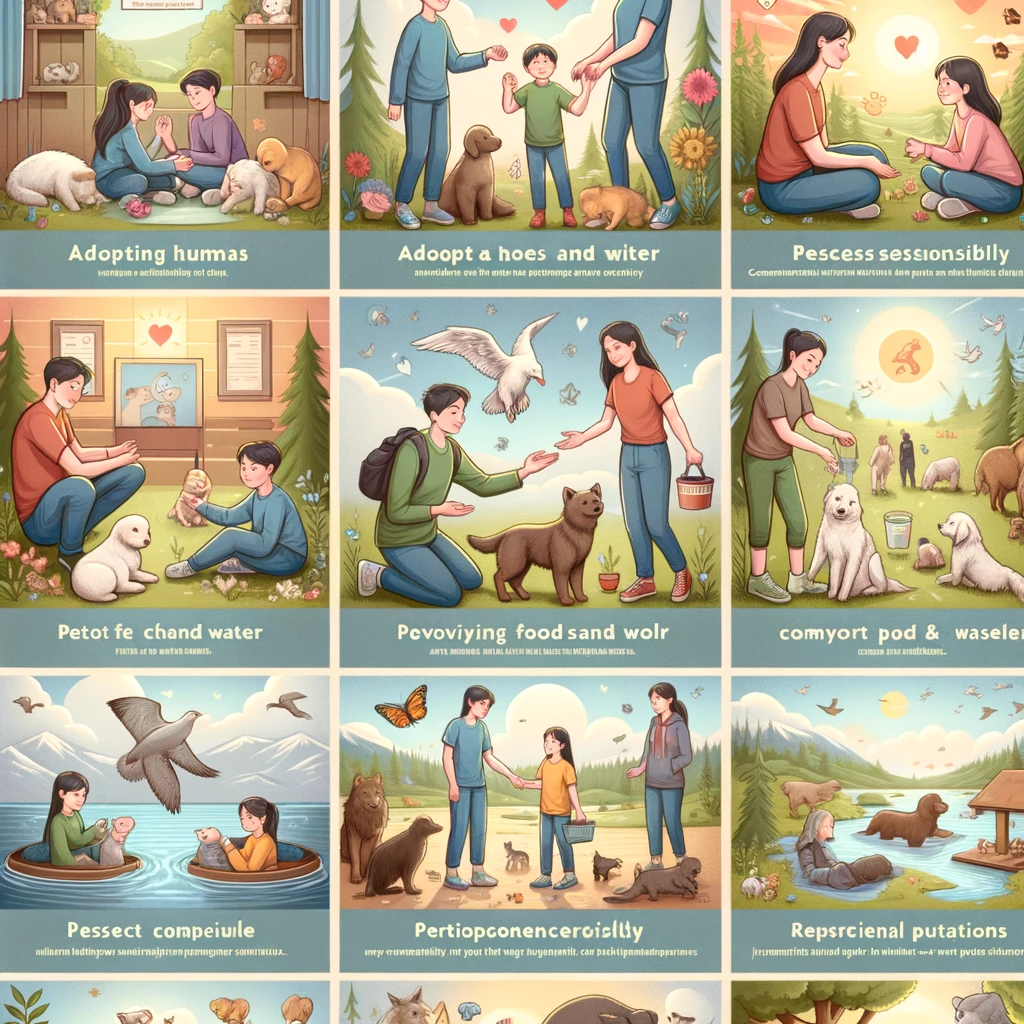
Diabetes in animals
- Change in appetite: Often, an increased appetite (polyphagia) is observed because the body’s cells cannot effectively use glucose as an energy source.
- Weight loss: Despite an increased appetite, animals with diabetes can lose weight as their bodies begin to burn fats and proteins in search of alternative energy sources.
- Fatigue and weakness: The inability to use glucose leads to decreased energy levels, which can result in lethargy and overall weakness.
- Behavioral changes: Animals with diabetes may show changes in behavior, such as apathy or irritability.
- Vision disorders: Advanced diabetes can lead to cataracts (in dogs) and vision problems, even blindness.
- Susceptibility to infections: Diabetes weakens the immune system, making animals more susceptible to infections, especially skin and yeast infections.
- Skin and fur problems: Animals with diabetes may have unhealthy-looking fur, dry skin, and may be more prone to dermatological problems.
- Ketoacidosis: Untreated diabetes can lead to a condition called diabetic ketoacidosis, which is life-threatening and characterized by the accumulation of ketone bodies in the blood.
- Increased thirst and frequent urination: Similar to humans, animals with diabetes experience increased thirst (polydipsia) and increased frequency of urination (polyuria) due to the high level of glucose in the blood, which the body tries to eliminate through the kidneys.
- Need for treatment: Diabetes in animals requires treatment, which may include insulin administration, dietary changes, and regular exercise. Regular veterinary visits are crucial for monitoring health status and adjusting the treatment plan.
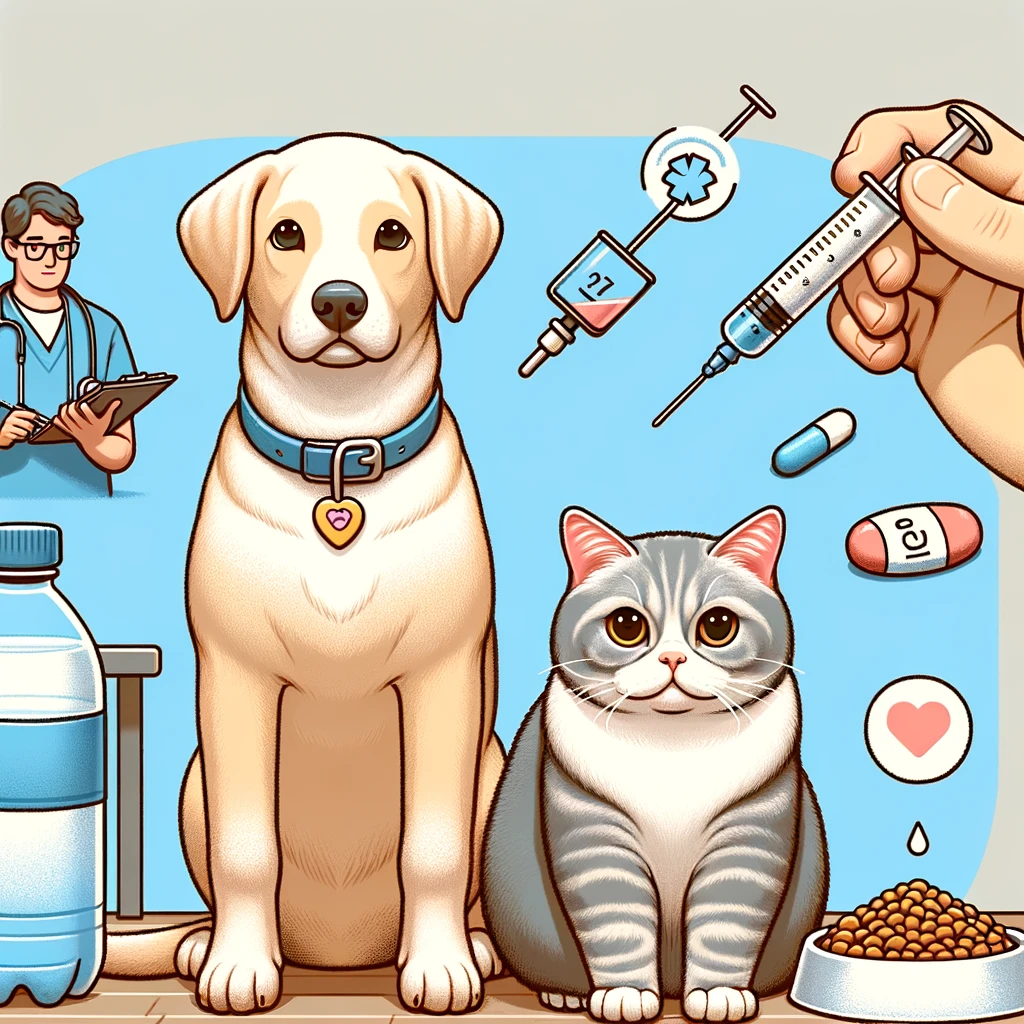
- If your pet is born with diabetes or has diabetes, we have a medication for it on the shop cera-pet.pl on which you can buy a glucometer for testing blood sugar levels in dogs and cats.
Common Diseases in Animals
- Skin Diseases – Such as allergies, fungal infections, mange (scabies), and bacterial infections, which can cause itching, hair loss, and discomfort.
- Parasitic Diseases – Including both internal (like roundworms, tapeworms) and external parasites (fleas, ticks).
- Infectious Diseases – Such as canine parvovirus in dogs, feline panleukopenia (feline distemper), or viral diseases in birds.
- Respiratory System Diseases – For example, feline upper respiratory infection (cat flu), kennel cough (bordetellosis) in dogs.
- Digestive System Diseases – Issues such as gastritis and enteritis, caused for example by consuming inappropriate food or foreign objects, poisonings.
- Urinary System Diseases – Kidney stones, bladder inflammation, often occurring in cats, dogs, and also in smaller animals.
- Metabolic Diseases – E.g., diabetes, obesity, which can lead to further health problems.
- Circulatory System Diseases – Such as heart failure, which can affect older animals.
- Cancerous Diseases – Various types of cancer, which can be difficult to treat and often require surgical intervention or chemotherapy.
- Genetic and Congenital Diseases – Congenital defects and hereditary diseases, which can affect the quality of life of animals, e.g., hip dysplasia in larger breeds of dogs.
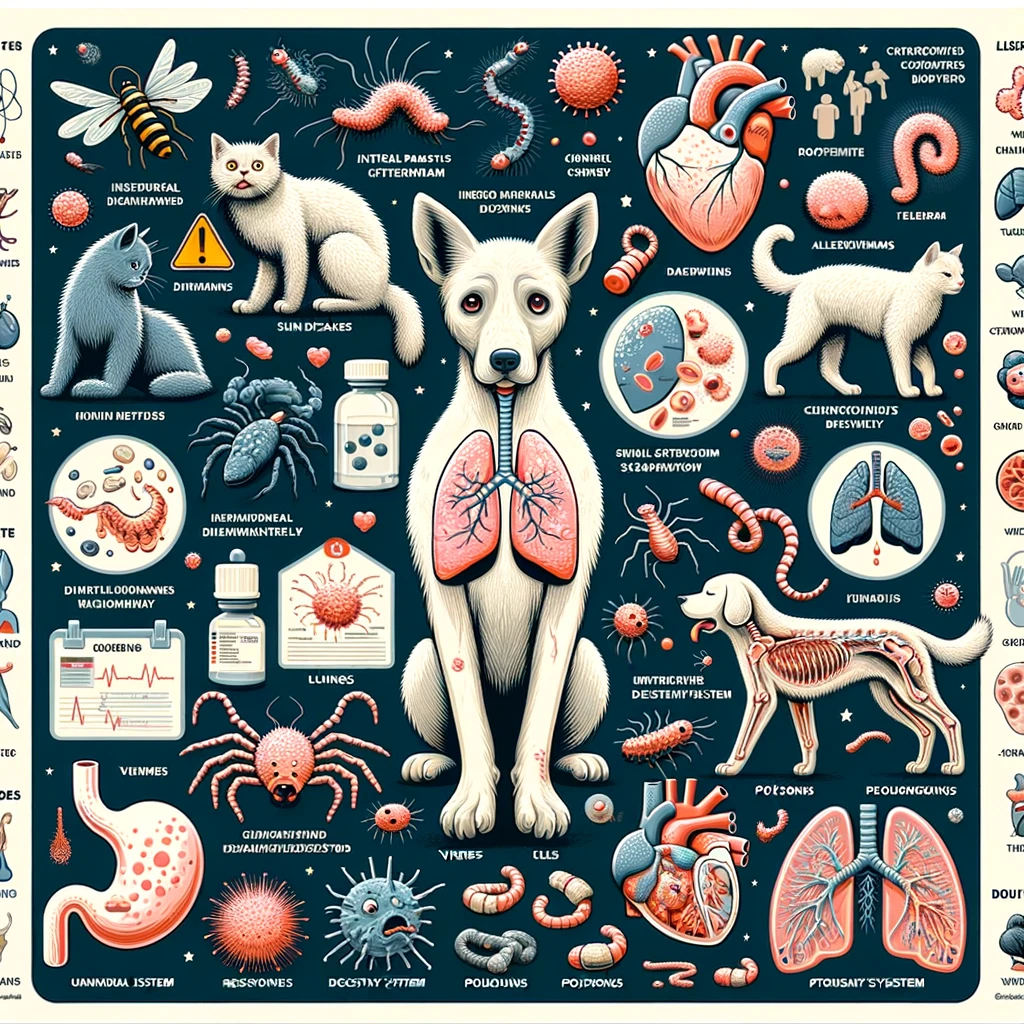
Why It’s Better to Have Pets Rather Than Wild Animals?
- Safety: Pets like dogs and cats are domesticated and have a predictable temperament. In contrast, wild animals can be unpredictable and potentially dangerous because they are not used to human interaction.
- Legal Compliance: Many jurisdictions have strict laws regulating the ownership of wild animals due to safety and ethical concerns. Keeping pets complies with these regulations.
- Health & Well-being: Domesticated animals often receive regular medical care and vaccinations, reducing health risks. Wild animals might carry diseases that can be transferred to humans.
- Adaptation: Pets have evolved to live alongside humans, adapting their behaviors and needs accordingly. Wild animals retain instincts that may not align with life in a household, leading to stress and maladaptive behaviors.
- Conservation: Owning wild animals can contribute to the decline of wild populations. Keeping domesticated pets instead helps protect wildlife and their natural habitats.
- Enrichment & Bonding: Domesticated pets often enjoy interacting with humans, forming strong bonds and enriching human lives. Wild animals do not always seek this kind of relationship and may suffer in captivity.
